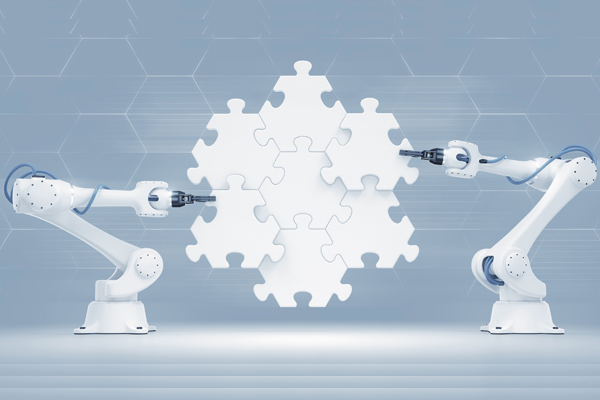
By Sara Pearson Specter
Today’s robotic solutions—both fixed and autonomous mobile robots—are increasingly being built as a platform upon which application-specific solutions can be built to handle unique manufacturing and warehousing tasks. But, in today’s highly dynamic, ever changing world, needs and strategies may likewise shift. Fortunately, due to their inherent flexibility and versatility, robots can be adapted to accommodate those changing needs.
Depending on the new task at hand, modifications can be made within onboard software to allow the robot to tackle the new process. Or—if the new purpose is vastly different from the original function—the manufacturer can help to re-engineer new functionality on an existing system base. Either way, by adapting an existing robotic solution to meet a new need, the initial investment is maximized and the entire operation benefits from the functional adaptability.
Here, a look at four operations that are leveraging robotic flexibility to handle new products, tackle new tasks, and ensure the health and well-being of their employees and customers during the COVID-19 pandemic.
Robotic AI Enables Picking of Broad, Constantly Changing Variety of Products
While robots are ideally suited to repetitive tasks, until now they lacked the intelligence to identify and handle tens of thousands of constantly changing products in a typical dynamic warehouse operation. That made applying robots to picking applications somewhat limited. Therefore, when German electrical supply wholesaler Obeta sought to install a new automated storage system from MHI member KNAPP in its new Berlin warehouse as a means to address a regional labor shortage made worse by COVID-19, the company specified a robotic picking system powered by onboard artificial intelligence (AI).
“The Covariant Brain is a universal AI that allows robots to see, reason and act in the world around them, completing tasks too complex and varied for traditional programmed robots. Covariant’s software enables Obeta’s Pick-It-Easy Robot to adapt to new tasks on its own through trial and error, so it can handle almost any object,” explained Peter Chen, co-founder and CEO of MHI member Covariant.ai.
“Historically, a robot was programmed to perform one kind of task, such as fastening the same bolt onto the same car part,” he said. “AI-powered robots can handle much more complex tasks. With item picking, for example, the Covariant Brain can identify what an object is, recognize the optimal grasp point, understand how heavy or light the item is, and determine where to place it. The AI learns to automatically make decisions about how to pick and handle constantly changing items.”
That functionality enables the robot to act more like a human, Chen continued. “For a human, picking up different items seems so simple. But in reality, there are a lot of steps and decisions that have to be made. With AI software that can learn and adapt, a robot can handle a wide variety of products as quickly and accurately as a manual station,” he said.
 MHI Solutions Improving Supply Chain Performance
MHI Solutions Improving Supply Chain Performance